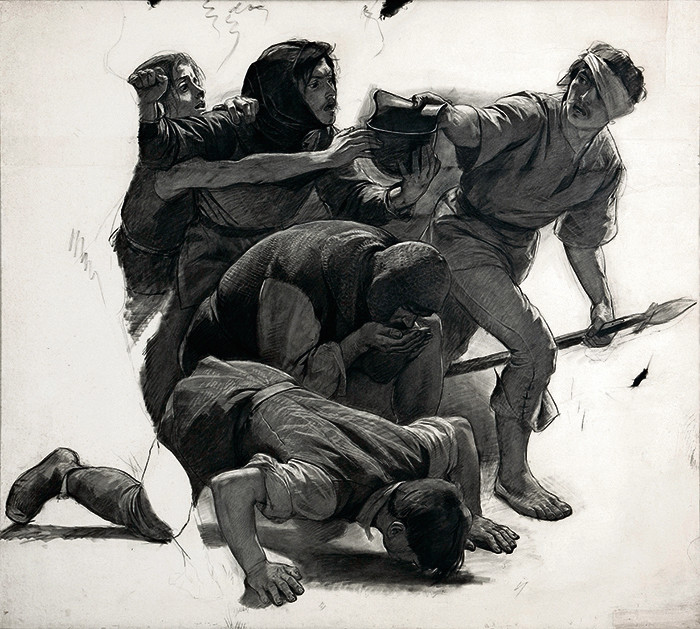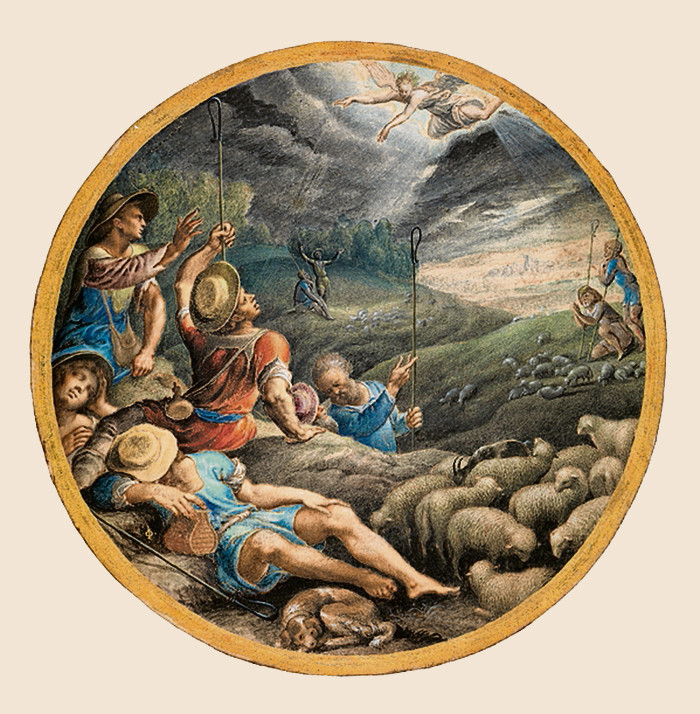London Art Week preview: sketches and drawings

Simply sign up to the Life & Arts myFT Digest -- delivered directly to your inbox.
London Art Week (LAW), when commercial galleries in Mayfair and St James’s open their doors in unusually extrovert displays and the leading auction houses mount their Old Master and British sales, is about to begin. These few streets are home to a staggering density of dealerships, and LAW offers a platform for them to display their treasures and make the best case for their field. Drawings, for instance, were once a highly regarded field for collectors: now, dealers have to work harder to draw attention, putting together scholarly catalogues and themed exhibitions.
London dealership Lowell Libson & Jonny Yarker is opening a groundbreaking exhibition of 100 drawings entitled The Spirit and Force of Art: Drawing in Britain 1600-1750. It has taken them 10 years to accumulate the sheets, which range from a loose, bold study of drapery by Sir Peter Lely to a highly finished gouache on vellum, a meticulous reduced version of Poussin’s “Hercules Between Virtue and Pleasure”, made by Bernard Lens III, royal miniaturist to Georges I and II, in 1719.
“We want to refocus people’s attention on to this material,” Yarker says. “It offers a different story of British art from the received view.” As the scholar Richard Stephens writes, “English or British drawings were actually the products of many nationalities, often with their own distinct artistic habits.” So if you were expecting Nicholas Hilliard and William Hogarth, here we see instead an early Italianate miniature by French-born Isaac Oliver, a billowy watercolour sketch by the Dutch-bred master of sea paintings, Willem van de Velde the Younger, and a pen and brown ink sketch of “The Coronation of the Virgin” by, as some argue, the most significant figure in British art in the 17th century, Inigo Jones.
The dealer Stephen Ongpin, meanwhile, has an exhibition devoted to French drawings with a lavish catalogue, Watteau to Gauguin: French Drawings of the Eighteenth and Nineteenth Centuries. Watteau is unusual in that he is equally renowned for his drawings and his paintings. Ongpin has a vivid red and black chalk sketch of three figures — two women, one resisting the embrace of a man — demonstrating the artist’s fluency and wit.
But, as Ongpin explains, one of the joys of collecting drawings is that you discover highly accomplished draughtsmen not widely known for their paintings: “I wanted to show artists known only to scholars and lovers of drawings,” he says. Thus the catalogue opens with a lucid, highly finished drawing of Tobias and the Angel by the little-known Louis Chéron, a French Huguenot who fled France for Britain followed the revocation of the Edict of Nantes in 1685. Ongpin will also show a red chalk drawing of a fashionable young man reclining by Watteau’s pupil Jean-Baptiste Pater, which relates to one of his best works, “The Dance” (1725), a fête galante canvas acquired by Frederick the Great. Like Watteau, Pater made hundreds of drawings as exercises, many of which were collected at the time.

Guy Peppiatt, a specialist in British drawings and watercolours from the 18th and 19th centuries, bemoans the decline in what was a vigorous market. But alongside traditionally highly valued works by John Sell Cotman and JMW Turner, this year he also offers a rapid, atmospheric late sketch by David Cox of woodland on top of Box Hill in Surrey that has an immediacy lacking in some of Cox’s grander landscapes. “No subject. Just depth,” Peppiatt says.
It is informal sketches like these, he believes, that draw new interest. And the fusing of Old Master and British Drawings auctions has at least enabled people “to see the importance of British drawings, [and] their relative good value”.
Another surprise is a striking nude by Sir William Orpen, at Master paintings and drawings dealership Jean-Luc Baroni. A contemporary of Augustus John at the Slade (1897-99), between 1913 and 1916 Orpen embarked on a series of three major allegorical fresco-like pictures of Irish subjects, for one of which he created this delicately drawn sketch of a young peasant undressing to bathe. For Alexandra Chaldecott, in charge of drawings at Jean-Luc Baroni, it reaffirms his early excellence — sometimes overshadowed by his later career as war artist and society portraitist.
The London-based drawings dealer Florian Härb is showing a typically lively drawing in pen and ink and brown wash of Neptune and Galatea by the 16th-century Veronese artist Paolo Farinati. This would have been one of many drawings he created to decorate houses around Verona from the 1550s onwards, most of which are destroyed. Without drawings like this, his place in art history would be lost. Härb also has a beautiful red chalk drawing of putti by Guercino, for his frescoes in the cupola of Piacenza cathedral (1626-27).
Where the original art work is inaccessible, a drawing can be the nearest a collector can come. As the dealer Andreas Pampoulides, of Lullo Pampoulides, says of their drawing by the Torinese artist Andrea Gastaldi, a large-scale charcoal study for his 1867 public commission “The Siege of Tortona”: “This allows us to admire Gastaldi’s exceptional technical abilities up close.”
For many, the primary appeal of drawings is to take us behind the façade of grand public commissions. Sotheby’s Old Master and British Works on Paper Sale on July 4 includes a delightful design by Jacopo Ligozzi for a knight’s plumed helmet. Ligozzi, hardly a household name now, was an important figure in the Medici court and this design relates to the events organised for the wedding of Cosimo II in 1608. Sotheby’s specialist Greg Rubinstein calls it “a drawing that takes you to the party”.
Christie’s Old Master and British Drawings and Watercolours Sale the night before offers a different treasure: a magnificent finished drawing by Swiss artist Johann Heinrich Füssli from the 1760s, before his reinvention as the British artist Henry Fuseli. It treats that very English subject, a scene from Edmund Spenser’s The Faerie Queene, with charm and vivacity. Harriet Drummond, international head of British art on paper at Christie’s, points out that Fuseli’s later painting of the subject has lost the drawing’s “Michelangelesque energy”. It seems that, partly, we are drawn to drawings because drawings are all about beginnings.
June 29-July 6, londonartweek.co.uk
Follow @FTLifeArts on Twitter to find out about our latest stories first. Subscribe to FT Life on YouTube for the latest FT Weekend videos
Comments